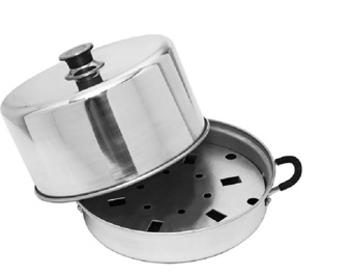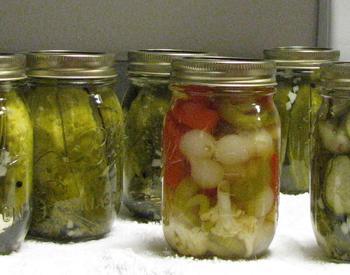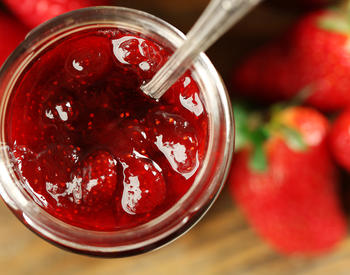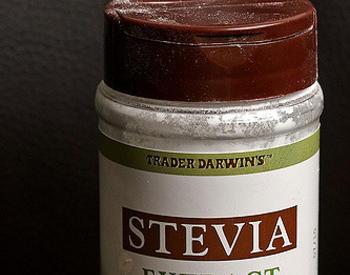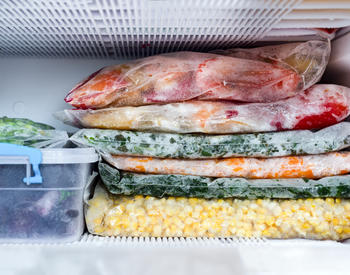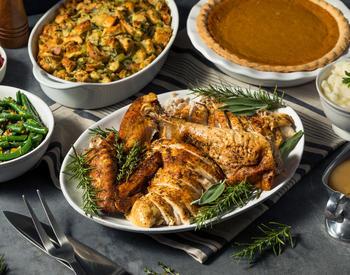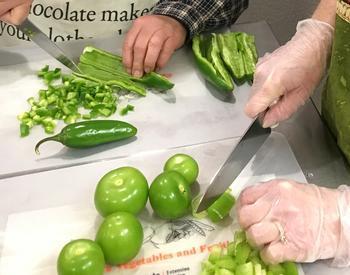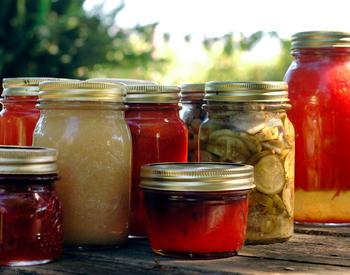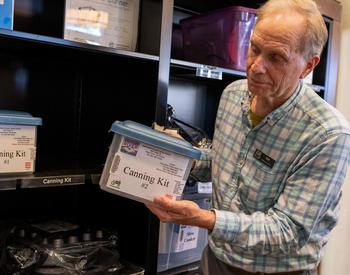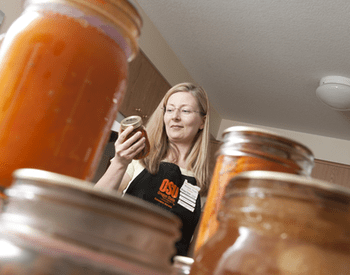Download this publication as a PDF
Northwest waters provide an abundance of seafood suitable for home canning, including albacore tuna. Albacore is described as “white meat” tuna in commercial packs. Canning seafood PNW 194 gives instructions for precooking tuna before canning, which is the same method used by commercial tuna canners.
However, you do not have to precook tuna before canning. This publication describes one convenient way to prepare tuna for the “raw pack” home-canning technique, taking advantage of the unique flavor you obtain by cooking the tuna in its own juices.
Thawing
If you purchased frozen tuna, use one of the two methods for thawing:
- Thaw fish in cold water until it is no longer rigid but not completely thawed. Raw flesh is easier to handle when it still contains some ice crystals.
- Thaw in a cool place (less than 55°F or 13°C) in a covered container. For best quality, process tuna as soon as possible after it is thawed.
For filleting
- When filleting any fish, sharp knives are essential for success. The tuna anatomy is different from that of most Northwest fish. Rather than running like a ridge from the top of the head to the tail, the spinal column runs down the center of the fish and is surrounded by four loins that are separated by intermuscular bones.
- Begin by cutting down the length of the back along one side of the dorsal fin. Cut completely to the spinal column in the center of the fish, using the dorsal fin and its bones as a guide.
- Cut around the gill and pectoral fin (the long fin on the side).
- Slide fingers under the skin and peel toward the belly, exposing both loins.
- Use fingers to separate the upper loin from bones.
- Remove the upper loin completely.
- Also use fingers to remove the lower loin, being sure to avoid the entrail sack, which should remain attached to the carcass.
- Use fingers to remove the band of dark flesh from the center of each loin. Sometimes knife cuts are helpful for complete removal. The dark flesh is stronger flavored and can affect the delicate tuna flavor. Some people enjoy the taste of this dark flesh. It also makes good pet food (cook first).
- Some people prefer to scrape the blood vessels and dark areas to ensure a top-quality white flesh when canned.
- Repeat the process on the other side of the fish.
Canning tuna
- About 1 pound of raw tuna will fill a half-pint jar. Use only half-pint or pint jars.
- Cut fish quarters crosswise with a sharp knife into lengths suitable for jars.
- Pack pieces into jars, pressing down gently to make a solid pack.
- Leave 1-inch headspace. For raw-pack tuna, no added liquid is necessary. Salt is optional.
- Wipe the jar rims clean with a paper towel moistened with vinegar to remove any oil from the tuna before putting on the lid. Adjust lids and rings.
- Put 2–3 inches of hot water in the canner. Adding 2 T of white vinegar to the water in the canner will reduce the odor created during processing.
- Process half-pints and pints for 100 minutes at 10 pounds pressure (weighted gauges) or 11 pounds of pressure (dial gauges). Adjust pressure for higher elevations. See Canning seafood PNW 194 for more information.
- Follow the manufacturer’s instructions for your canner when processing. This should include exhausting steam from the canner for 10 minutes before closing the petcock or putting on the weight.
- After processing, remove the canner from the heat and let the pressure return to zero. Remove the weight or slowly open the petcock. Wait 10 minutes before opening the lid and removing the jars.
- Test seals on jars within 24 hours. If the jars have not sealed, reprocess with new lids for the entire length of time or refrigerate or freeze the product.
Related articles
Source: Filleting Tuna for Canning (SG 73), September 1982

